#Bas-Rhin department
Text

Strasbourg. La Place du Corbeau et la Cathédrale.
13 notes
·
View notes
Photo
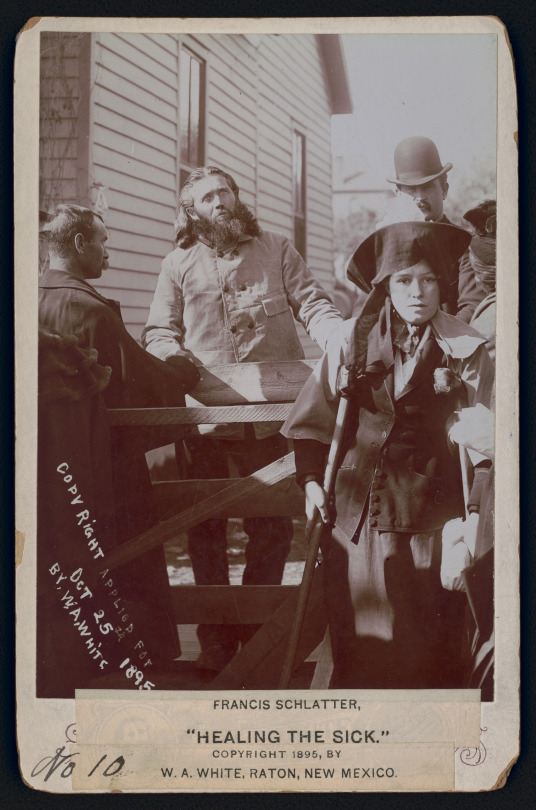








Denver, Colorado 1895: Crowds gathered outside the home of alderman Fox, waiting to see his guest Francis Schlatter, a cobbler and reputed worker of miraculous cures known as The Healer.
Francis Schlatter was born in the village of Ebersheim, Bas-Rhin, near Sélestat, in Alsace on April 29, 1856. In 1884 he emigrated to the United States, where he worked at his trade in various cities, arriving in Denver, Colorado, in 1892. There, a few months later, he experienced a vision at his cobbler's bench in which he heard the voice of the Father commanding him to sell his business, give the money to the poor, and devote his life to healing the sick. He then undertook a two-year, 3,000-mile walking pilgrimage around the American West which took him across eastern Colorado, Kansas, and Oklahoma, and then to Hot Springs, Arkansas, where he was arrested and jailed for vagrancy.
In early 1894 he escaped and headed west, walking across Texas, New Mexico, and Arizona and into southern California, where he began his first efforts at healing with the Indians of the San Jacinto Valley. After two months, he again took up his pilgrimage and traveled east across the Mohave Desert, living on nothing but flour and water. In July 1895 he emerged as a Christlike healer in the Rio Grande villages south of Albuquerque. There, while treating hundreds of sick, suffering, and disabled people who flocked to Albuquerque's Old Town, he became famous. Crowds gathered about him daily, hoping to be cured of their diseases simply by clasping his hands. The following month he returned to Denver, but did not resume his healings until mid-September. During the next few weeks, his ministry drew tens of thousands of pilgrims to a small home in North Denver. Schlatter is said to have refused all rewards for his services. His manner of living was of the simplest, and he taught no new doctrine. He said only that he obeyed a power which he called Father, and from this power he received his healing virtue.
On the night of November 13, 1895, he suddenly disappeared, leaving behind him a note in which he said that his mission was ended. Then, in 1897 news came out of Mexico that the healer's bones and possessions had been found on a mountainside in the Sierra Madre. At the same time, a New Mexico woman named Ada Morley published a book called The Life of the Harp in the Hand of the Harper which told of the healer's three-month retreat on her ranch in Datil, New Mexico, after his disappearance from Denver. The book, which carried the title the healer gave it, also contained a first-person description of his two-year pilgrimage, which he believed held the same significance for mankind as Christ's forty days in the wilderness. On departing the Morley ranch, Schlatter told Morley that God intended to establish New Jerusalem in the Datil Mountains, and the healer promised to return at that time.
Almost immediately after reports came out of Mexico announcing the healer's death, skepticism arose. Ada Morley, who had visited at length with Schlatter during his three-month stay at her ranch in New Mexico in early 1896, had her doubts. "The men who found the skeleton declared to have been [Schlatter's]," she said, "say it was resting as though it had never been disturbed. I know the coyotes would never have left it so if it had ever lain there bearing flesh."
The New York Times expressed doubts as well. "It does not appear that the human remains were actually identified as Schlatter's," the newspaper stated on June 19, 1897, "or that any identification was possible." However, the presence of the healer's possessions at the scene, especially his copper rod, convinced most people otherwise.
Over the next twenty-five years, several men arose claiming to be Francis Schlatter. One, a Presbyterian minister named Charles McLean, died in Hastings, Nebraska, in 1909, creating a controversy between skeptics and believers. Two others, August Schrader and Jacob Kunze, who formed a healing team that operated between 1908 and 1917, were arrested and jailed in 1916 for mail fraud. A final so-called imposter died in St. Louis, Missouri, in October 1922.
During the second half of the twentieth century, a renewed interest in Schlatter brought with it speculation about the claim of the healer who had died in St. Louis. Most recently, The Vanishing Messiah: The Life and Resurrections of Francis Schlatter (2016), argues that the healer conspired to stage his death in the mountains of Mexico and returned to the United States to continue healing in the eastern and southern parts of the country until his death in St. Louis in 1922.
84 notes
·
View notes
Photo

safischer1 - Dambach la ville
Dambach-la-Ville is a commune in the Bas-Rhin department in Alsace in north-eastern France.
46 notes
·
View notes
Text
While I am resentful all the Trek’s got quarantined to paramount +, it does offer something that neither the netflix versions or my dvd/bluray box sets do, which is the ability to put both the subtitles and the audio (!) into different languages. Finally living the dream of watching Voyager in French and here’s some observations.
Eye of the Needle:
Tuvok has a very young-sounding voice actor. No attempt to replicate or find a substitution for the normal Vulcan “flat” intonation.
I wouldn’t call Robert Picardo or Ethan Philips character actors per se, but the French version would have been better served by getting character actors or like, distinctly accented french-speakers for their roles, they’ve become just some guy with their current ones. Neelix simply should speak like an Alsatian person from the Bas-Rhin department. The Doctor should have a Marseilles accent. (dream casting for the wildly unpopular “what if star trek characters came from places in France instead of Midwestern United States” AU. Jean-Luc is from Paris, Texas in that one.)
Tom Paris has a just some guy voice and that’s as it should be
Kate Mulgrew’s transatlantic accent really carries Janeway as a character. She feels diminished without it, even though her French V.O. is doing a good job sounding commanding
Scorpion part 2:
Different voice actor for Tuvok, who has a more resonant voice, which is a better fit. Still no Vulcan intonation, emotes a lot.
I truly can not tell if its the same Janeway or not, both episodes she’s just had an archetypal “commanding woman” voice
Seven of Nines fucking name is “Seven of Nine Adjonction Tertiaire de l’Unimatrice Zero Un″ They just translated the second half of her name and everyone continues to call her the English word Seven with a French accent.
She tells Janeway “Vous pouves m’appeler Seven.” Flabbergasted by this choice.
I have been calling her Sept de Neuf for literal decades. The level of betrayal here is immense.
I fucking refuse to watch the god-awful Nazi hologram two-parter but like, do they call her Mademoiselle de Neuf in that one? Mademoiselle de Nine?
The Gift
Fairly certain new Harry voice actor since Wormhole
Can not get over how funny Janeway introducing (French accent) “Sevahnofnine” is
B’Elanna’s v.o. is pretty good overall
Kes is archetypal “cute woman” voice.
Scientific Method:
New voice actress for Seven, she’s got a nice raspy voice, very good and correct choice. The prior one was just like “generic television woman voice” if that makes sense? Raspy-voiced actress also appears in Bliss, at the very least. She’s really really good. This v.o. and the second Tuvok v.o. (other than the lack of Vulcan intonation) are both the best translations for their personalities so far.
Once Upon a Time:
“Wildman” sure is a profoundly anglophone last name huh? “Mademoiselle Weeldmahn” is here
Samantha’s good bye message to Naomi WILL make me cry in any language
I would be really interested to know what Spanish or German speakers think of the respective Voyager dubs
18 notes
·
View notes
Text
Hundreds of French senators are entering the final week of their campaign before the sénatoriales - France’s senate election, which is set to renew nearly half of its total composition.
A total of 170 senators across all French parties are to be nominated on September 24 as part of an election which impacts the balance of France’s legislative powers.
Under the Fifth Republic (1958 - now), the institution has sometimes been seen as ‘on the back burner’, and wrongly considered to have only slight legislative powers. It has also been criticised for the ‘slowness’ with which it makes decisions.
However, interest in the chamber has increased under President Emmanuel Macron’s second term, as MPs in the Assemblée Nationale are now split into three equally-sized political blocks, with no absolute majority.
The Senate has since emerged as an institution that can both act as an important legislative decision-maker and a way to ensure greater checks and balances on Mr Macron’s reforms. This is particularly so in light of the fact that he has to convince MPs with greater intensity than when he had a majority.
The Connexion spoke to two political experts about the Senate, including its role, its election, and the perception that people in France have of the chamber.
What is a senator’s role?
The Senate is one of the two chambers of French politics with the Assemblée Nationale (MPs).
The institution represents French regions and society, and acts as a counter-power to the legislative activities of the Assemblée. Its members participate in the voting of laws, the drafting of bills and amendments.
“The Senate is also a strong source of ideas and important reports,” said Bruno Cautrès, a political expert and member of Sciences Po political research centre CEVIPOF, who emphasised the important counter-power role of the chamber.
The Senate comprises 348 members. Since 2014 its president has been Gérard Larcher (Les Républicains; conservative right) for three consecutive terms. He was first elected president from 2008 to 2011.
How does the election work?
Senators take office for six years. Every three years, elections change the Senate’s composition, with half of the members changing each time. A total of 170 senators are elected during the first elections, and 178 during the next.
Unlike the presidential, municipal and regional elections, sénatoriales function through the universal indirect suffrage, meaning that French voters do not vote for a Senator themselves, but cast a ballot during another election for a representative who later votes during the sénatoriales.
Senators are elected by 79,000 members of an electoral college, which comprises town councillor delegates, MPs, other senators, town and regional councillors. These are known as the ‘grands électeurs.’
The college - 95% of which comprises town councilors delegates - will elect 170 senators on September 24, from candidates across 42 French mainland and overseas departments.
The number of senators elected varies by department and takes into account the population. For example, 12 senators are elected in Paris, but there are only five in the Bas-Rhin department.
Old and slow men?
Typically, people in France show little interest in the Senate.
“France’s electoral life revolves around the presidential and the legislative election,” said Mr Cautrès. “Considering that the sénatoriales are the only elections based on universal indirect suffrage, they have always been seen with mystery and distance by people in France.”
The Senate is also often seen as nothing more than ‘old men making decisions very slowly’. The French language has even turned this into an expression.
“The expression ‘un train de sénateurs’ (going ‘at senators’ speed’) characterises something that goes very slowly,” said political expert Jean Petaux.
“In an era where modernity is characterised by speed the Senate looks more like a snail’s race than a sprint,” he added.
0 notes
Text
Crash Course in the Wines of Alsace
Sub-Head: Virginie Boone, writer, reviewer, and longtime contributor to Wine Enthusiast, offers a short crash course in the wines of Alsace and some wines to seek out.
Body:
Alsace is the heart of France’s aromatic white wine universe, a small region in the northeastern corner of the country bordering Germany and Switzerland. The biggest towns from north to south include Strasbourg, Colmar, Mulhouse, and Besançon; Burgundy lies to the south and west.
Critics like Robert Parker have called Alsace “perhaps the most underrated and underutilized source of great white wines in the world.” He is not alone in this assessment.
While Alsace shares more wine varieties with its neighbor Germany than with Burgundy—most importantly, Riesling—“Alsace makes Germanic wine in the French way,” writes Jancis Robinson in the World Atlas of Wine, 7th edition. This is a region with its own imprint and style, developed and codified over the ages, with roots going back to the Roman Empire.
Part of the region’s signature style today is tied explicitly to the traditional way winemakers in Alsace have sought to make bone-dry, full-bodied wines, fermenting every ounce of sugar out of the grapes in stainless steel tanks or large, used oak barrels forgoing malolactic fermentation. Purity of fruit is the goal.
There are three AOC designations within the region: AOC Alsace simply, for most of the wines; AOC Crémant d’Alsace, for sparkling wines made in the traditional method; and AOC Alsace Grand Cru, which today includes 51 classified terroirs, or lieux-dits, and is a system that restricts yields and increases ripeness, though the term can only be applied to wines made from Riesling, Pinot Gris, Gewürztraminer or Muscat with minor AOC-approved deviations (a full breakdown can be viewed here).
While the aforementioned four grapes are considered the region’s noble varieties, in Alsace, Riesling is definitely king, where it ages well but can also serve as a worthy aperitif. There are also sizable plantings of Pinot Blanc, Sylvaner, Chasselas, Auxerrois (a common base wine for crémant), and Pinot Noir.
Edelzwicker is a term used when there is a blend of white AOC varieties, often consisting of some amount of Pinot Blanc, Sylvaner, and Chasselas, though percentages are not indicated, varieties can be vinified separately or together and producers are not required to put the vintage on the label. A separate label indication, Gentil, is reserved for superior blends that include at least 50% of the noble grapes Riesling, Muscat, Pinot Gris, or Gewürztraminer.
Alsace is generally split in two departments: Haut-Rhin (Upper Rhine) and the Bas-Rhin (Lower Rhine), with the Vosges Mountains along the western border sheltering vineyards from excessive rainfall. Here, vines do best on east-facing hillsides where they get the most sun. The Haut-Rhin, set north and south of Colmar, offers a protected climate where the elevation of the mountains keeps temperatures relatively higher, too. Most of the classic Rieslings of Alsace come from here.
Some in Alsace list their Grand Cru status; others do not. Unlike many of their counterparts in other parts of France, whether AOC Alsace or AOC Alsace Grand Cru, producers almost always list the name of the grape variety on the label.
IMG IDEA
When a wine is sweet, like a Vendange Tardive, which translates as Late Harvest, nothing about the sweetness level will be listed on the label. A Sélection des Grains Nobles is made from even riper, botrytized grapes, but it will also not be clear about the sweetness level.
AOC Crémant d’Alsace is the region’s dry sparkling wine, made in a traditional Methode Champenoise style. Alsace is also known for its delightful eaux-de-vie.
Some of the best-known producers in Alsace include Domaine Weinbach, established by the monks of Capuchin in 1612; Domaine Zind-Humbrecht, established in 1959; Justin Boxler, since 1672; and Maison Trimbach, one of the oldest in France, dating back to 1626.
The noble grapes of Alsace
Riesling – makes dry, steely wines that can be long-lived and crisp in acidity, with notes of lemon, grapefruit peel, lemongrass and Kaffir lime.
Gewürztraminer – a pink-skinned grape that makes full-bodied, flowery, lychee-fruited wines and is often the best introduction to Alsace’s aromatic whites. Very little oak is used in most of these wines, which also work well as late-harvest versions.
Pinot Gris – pink-skinned version of Pinot Noir whose grapes make deep-colored, full-bodied, soft and gently aromatic white wines. Italians call it Pinot Grigio. In Alsace, Pinot Gris is more revered than Pinot Blanc.
Muscat d’Alsace – makes a dry table wine that is typically a blend of Muscat Ottonel and Muscat Blanc a Petits Grains, is delicate and smells sweet.
The Others:
Auxerrois – a fuller-bodied, lower-acid version of Pinot Blanc, with which it is often blended.
Chasselas – a table grape often in blends.
Pinot Blanc – the region’s workhorse, this is a white-berried mutation of Pinot Gris related to Pinot Noir that makes a broad-flavored, full-bodied dry white wine. Blended with Auxerrois it is sometimes called Clevner.
Pinot Noir – the region’s notable red wine, these tend to be fairly light in color and body.
Sylvaner – high in acidity, racy and sleek, this grape is mostly blended to make Edelzwicker.
Wines to seek out
Albert Boxler 2020 Chasselas Vin d’Alsace (Kermit Lynch)
Albert Boxler 2020 Edelzwicker Reserve Vin d’Alsace (Kermit Lynch)
Domaine Ostertag 2020 Vieilles Vignes Sylvaner Alsace (biodynamic; Kermit Lynch)
Justin Boxler 2021 Pinot Auxerrois Alsace (Artisanal Cellars)
Maison Trimbach 2014 Cuvee Frederic Emile Riesling (Millesima-USA)
Meyer-Fonné 2021 Pinot Blanc Vieilles Vignes Vin d’Alsace (Kermit Lynch)
0 notes
Text
Bas-rhin via Encyclopedia.com
#Bas-rhin#Encyclopedia.com#Ancestral Connections#Germanic Folk Tradition#Bookshelf#Tumblr Staff Has Ruined Links Now And I Hate Them For It
0 notes
Text
In Alsace, Dot-Drops launches its first eco-designed suitcase

The brand created by the Société alsacienne de la maroquinerie, in Molsheim (Bas-Rhin), ensures that its new suitcase has a lifespan four times longer than a traditional suitcase. It is more repairable than its competitors and promises to be, eventually, made in France.
Consisting almost all of plastic, a suitcase is not recycled and would only have a lifespan of five years on average. The suitcase that roams around during our travels usually ends up in landfill or in an incinerator.
Located in Molsheim (Bas-Rhin)[1], the Dot-Drops brand says it wants to change the situation. Issued from the Société alsacienne de la maroquinerie[2], a family business with an annual turnover of six million euros, this brand created in 2009 has just launched an eco-designed suitcase that it presents as the first on the market. To promote recycling, the materials are limited in number and chosen to be easily separated at the end of their lifecycle. But above all, the case is sold with a small tool, allowing you to repair it yourself and the spare parts are available for life free of charge.
In the end, the Dot-Drops suitcase[3] has a guaranteed lifespan of twenty years, or "four times longer than that of a traditional suitcase" according to its founder, Julien Ehret. As for production waste, it is reused to manufacture black suitcase shells. All that is missing is a proper recycling channel, a "project within a project" which the brand's founder says he is tackling.
Relocate production
The Dot-Drops suitcase is currently made in China, except for the final assembly, that is carried out in Alsace by a subcontractor. Transport from Asia does not weigh heavily in the life cycle of the suitcase, indicates Julien Ehret who mentions the figure of 1%. A "research and development roadmap" is however on the table to relocate production to France - at least for the plastic shell - by the summer of 2024. This requires, according to the manager, to adapt tools and know-how available in France. For example, he considers that its volumes, relatively small, do not correspond to the sizing of the machines of French plastics processors.
Dot-Drops, that currently has a three-person team, hopes to double its workforce by the end of the year.
Source
Bénédicte Weiss, En Alsace, Dot-Drops lance sa première valise écoconçue, Les Echos, 25 août 2022, https://www.lesechos.fr/pme-regions/grand-est/en-alsace-dot-drops-lance-sa-premiere-valise-ecoconcue-1783658
[1] Molsheim is a commune and a subprefecture in the Bas-Rhin department in Grand Est in north-eastern France. The total population in 2017 was 9,312. Molsheim had been a very fast-growing city between the French censuses of 1968 and 1999, passing from 5,739 to 9,335 inhabitants, but this increase came to a noticeable halt since. The urban unit of Molsheim had 26,925 inhabitants in 2017, from 16,888 in 1968. Molsheim is part of the metropolitan area of Strasbourg.
[2] Designer of luggage, bags and suitcases since 1961, the Société Alsacienne de Maroquinerie, based in Molsheim, has always placed creation, innovation and quality at the heart of its strategy. https://www.jump.fr/
[3] https://dotdrops.fr/
0 notes
Text
Château d'Osthoffen
The Château d'Osthoffen (in French, Château d'Osthoffen) is a French château of medieval origin erected in the north-east of the country, in the commune of Osthoffen (department of Bas-Rhin), the original castle-fortress belonging to the "Wasserschloss" type, dating from the 12th or 13th century. It was listed as a historical monument in 1963. Osthoffen is located in the Alsatian countryside, 15 km from Strasbourg and 10 km from Molsheim.
This personal version of the castle has been conceived with the full CC of @felixandresims, @aggressivekitty, @syboubou and @lilis-palace .
With personal licences such as the moat filled with water instead of the original gardens and with additions such as the port or the landscaped area of the parade ground.
I hope you like it!


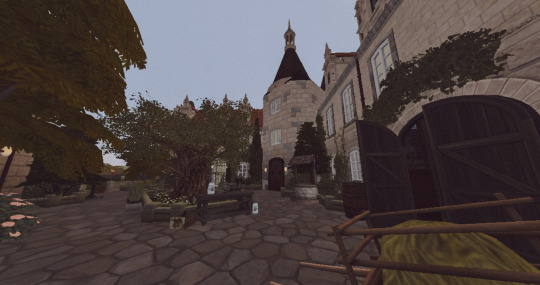

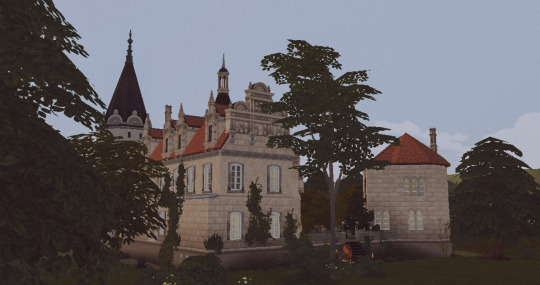

DOWNLOAD (tray files)
45 notes
·
View notes
Text
OTD Dec 7 1918
Dec 7 1918 OTD Georges Chevalier takes these 103-year-old colour autochrome photos in Strasbourg, Bas-Rhin, Alsace, France:
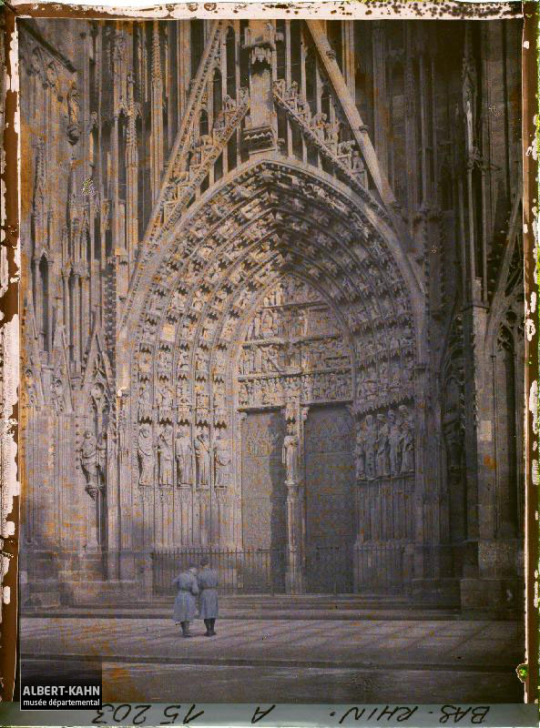
A 15 203

A 15 200

Google Street View

A 15 196 - France Alsace, Strasbourg, L'ensemble du vaisseau de la Cathédrale

Strasbourg, Bas-Rhin, Alsace, France, A 15 199
7 décembre 1918
Source: Albert-Kahn Museum / Department of Hauts-de-Seine
29 notes
·
View notes
Photo

City: Strasbourg
Country: France
Region: Grand Est
Department: Bas-Rhin
377 notes
·
View notes
Text
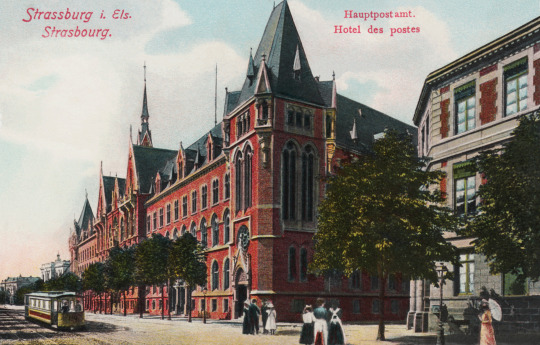
Strasbourg. Hotel des postes.
Strassburg im Elsass. Hauptpostamt.
5 notes
·
View notes
Photo

𝐉𝐀𝐊𝐄. –––– childhood.
in the original concept for his character, it’s possible that he was not supposed to be related to the wesker children but instead the ashfords. this would be somewhat more fitting, what with the similarities between the c-virus and t-veronica.
rather than having an anti-hero image right from the start, there was a time when we had the idea of him being handsome, with a gentle face and blonde hair, and coming from a noble european family.
the ashfords, as mentioned on my alexia blog, were originally supposed to be german and a lot of that still carried over even though they were made british. the surname muller is a common german surname ( müller, meaning “miller”) but can also be spelled mueller - but it is also common in switzerland and the french departments/regions of bas-rhin and moselle. this could also relate to the ashfords, given we know the paris facility of umbrella would bring it’s prisoners to rockfort island.
there is however, an existing character with the surname muller ( albeit, spelt as mueller ) - one of the umbrella scientists who created the daylight vaccine. dr mueller worked at the umbrella r&d centre in raccoon city, was involved in the t-virus project in 1993, and was involved in the illegal human research trials conducted in the hospital in the arklay hospital where patients with cancer were injected with the experiment T-JCCC 203. for the purposes of this blog, and this headcanon, i am choosing to imagine that dr greg mueller was related to jake’s mother and was her brother (and possibly took on a less “foreign” spelling of the surname to try and fit into an american society better ).
jake’s mother, mirjana, was an edonian immigrant to america in her early twenties after working in umbrella’s european facility - in the hopes of giving her experience and eventually transferring her to the soon-to-be-built russian facility - and likely met albert in the early 90′s. whilst the idea of wesker having a one night stand doesn’t seem particularly realistic to me but neither does a long-lasting relationship, we’ll go along with it begrudgingly under the impression that securing “personal” relationships was something wesker was encouraged to do prior to ( and possibly during ) his time as s.t.a.r.s captain in order to maintain the identity he was presenting outside of umbrella.
however, mirjana was diagnosed with cancer in early 1992 and unable to keep up with the demands of umbrella, resigned as a researcher and returned to her home country of edonia - though the main reason behind this was her pregnancy. fully aware of albert’s reputation in umbrella and his connection to spencer, both mirjana and greg knew it would be much safer for her to be out of the eyes of the company - forgotten about in edonia. greg, working on the t-virus project as well as being somewhat involved with the cancer-treatment T-JCCC 203 (and it’s ultimate failure), was hoping to find some sort of miracle cure - both for her. shown in outbreak, he opposes the idea of mass-producing the t-virus antiretroviral, so it’s clear his priorities lay elsewhere, although it is entirely possible he was planning to use mirjana as a test subject for a more refined version. whilst it’s possible jake got his immunity to the c-virus through wesker’s dna (although..i don’t know why he’d be immune to the c-virus because of that, as - as far as we know - wesker wasn’t immune to g or t-veronica, and the t-virus was actively killing him hence the required use of pg67aw), it makes more sense to me that mirjana had taken an early experimental version of the daylight vaccine, created by greg prior, which may have been focused on immunity to the g-virus as it was becoming more and more of the focus in the raccoon city facility over the standard t-virus - whereas the version of daylight which was created and distributed during the raccoon city outbreak focused on the most widespread threat at the time, which was the t-virus.
as a young single mother in a war-torn nation, jake was raised in extreme poverty. whilst her extended family in america may have had money, she had been outcast due to the pregnancy. with the “death” of albert, any possibility of mirjana reconnecting and informing him of his son became impossible, and with the raccoon city outbreak her extended family - including greg - were killed in the destruction. though mirjana did continue to work odd jobs, her health eventually was too poor to continue working, leaving the family finances to fall on jake’s shoulders.
once jake became a teenager, he attempted to take various jobs in order to raise the money to gain her better treatment, knowing full well that if they had proper medical care her health would only improve. alongside this, the growing tensions in edonia were becoming more and more violent, and jake took odd jobs on behalf of the rebel groups - hoping to make some money to save for his mother’s treatment - as he was living in a war zone regardless. this eventually turned to mercenary work for a group of local rebel group, despite knowing it was likely too late at this stage to help her. upon joining the mercenary group, when jake was 20, she finally succumbed to her illness.
following her death, jake became a much more bitter man despite his youth. with his only family deceased, and no knowledge about his father other than knowing he had never been around, he was left only with his comrades - who in the growing war in edonia became much more violent. the combination of this alongside his disdain for american - who caused wars and abandoned the people living in those areas whilst declaring themselves the best of western society - and the knowledge his “deadbeat father” was american, only pushed him further. whilst the mercenary groups he worked with had little loyalties, jake was not only involved in them for the money, but for the antifascist sentiment that had been it’s origins. whilst this is a core part of him, the failure to save his mother has always remained - though he bargains for money with sherry, we never see jake with anything that would come from that money. he doesn’t wear expensive or unique clothing, he doesn’t have his own personal weapons or home - jake, in my belief (or in my interpretation, i guess) was using the money he made from mercenary work to do what he never could in the helps of atoning for his perceived failure - to save the lives of those who cannot do it themselves (like a modern day robin hood) - he never expected to live past his mid-twenties, and therefore had no need for the money itself, and given his feelings on america and a capitalist society, instead provided for those who had been effected by the war in edonia.
also i don’t care what capcom says, he has a serbian accent and tattoos fight me.
2 notes
·
View notes
Photo

Place of the day: *20.Haut-Rhin * #happythursday !#❤️❤️❤️ #france_destination Haut-Rhin is a department in the Grand Est region of France, named after the river Rhine. Its name means Upper Rhine. Haut-Rhin is the smaller and less populated of the two departments of the former administrative Alsace region, the other being the Bas-Rhin (Lower Rhine). Especially after the 1871 cession of the southern territory known since 1922 as Territoire de Belfort, although it is still densely populated compared to the rest of metropolitan France. #trip #travel #travelgram #instatravel #vacation #travelphotography #photooftheday #traveling #instagood #photography #nature #travelling #wanderlust #holiday #love #travelblogger #adventure #picoftheday #explore #beautiful #summer #landscape #traveler #beach #instagram #tourist #tourism (at Haut-Rhin) https://www.instagram.com/p/CO05vfFpoV6/?igshid=15zpvai57a9s9
#happythursday#❤️❤️❤️#france_destination#trip#travel#travelgram#instatravel#vacation#travelphotography#photooftheday#traveling#instagood#photography#nature#travelling#wanderlust#holiday#love#travelblogger#adventure#picoftheday#explore#beautiful#summer#landscape#traveler#beach#instagram#tourist#tourism
1 note
·
View note
Photo

Daybreak over the Rhine, Strasbourg.
This is from Wikipedia:
Strasbourg is the capital and largest city of the Grand Est region of France and is the official seat of the European Parliament. Located at the border with Germany in the historic region of Alsace, it is the capital of the Bas-Rhin department.
As we sat taking coffee, and cake, in the upper deck, the party of ladies from the north of England were discussing Strasbourg behind us.
None of them knew what ‘Strasbourg’ was, or where it was. One of them thought it might be Belgian. Another wanted to try the rose wine at dinner. Her friend stated, very firmly, that rose wine gave her gas. At least two others agreed. They discussed this for at least twenty minutes, then decided amongst themselves that they would get back to their cabins to get ready for the outing to Strasbourg, which should be fun because they ‘liked mountains’.
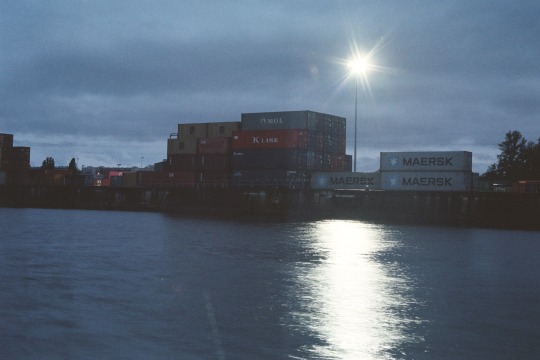
#strasbourg#france#germany#rhine#lensblr#coffeemonster42#35mm#35mm film#35mm photography#35mm color film#istillshootfilm
2 notes
·
View notes
Text
the Strasbourg University Hospital in turn launches the white plan
the Strasbourg University Hospital in turn launches the white plan
Europe 1 with AFP
11:06 am, December 02, 2021
The Strasbourg University Hospital announced on Thursday that it would trigger the white plan, a device allowing it to mobilize additional resources in the face of the new epidemic wave of coronavirus. As of November 28, the incidence rate in the Bas-Rhin department stood at 400 cases per 100,000 inhabitants, well above the national average of���
View On WordPress
0 notes